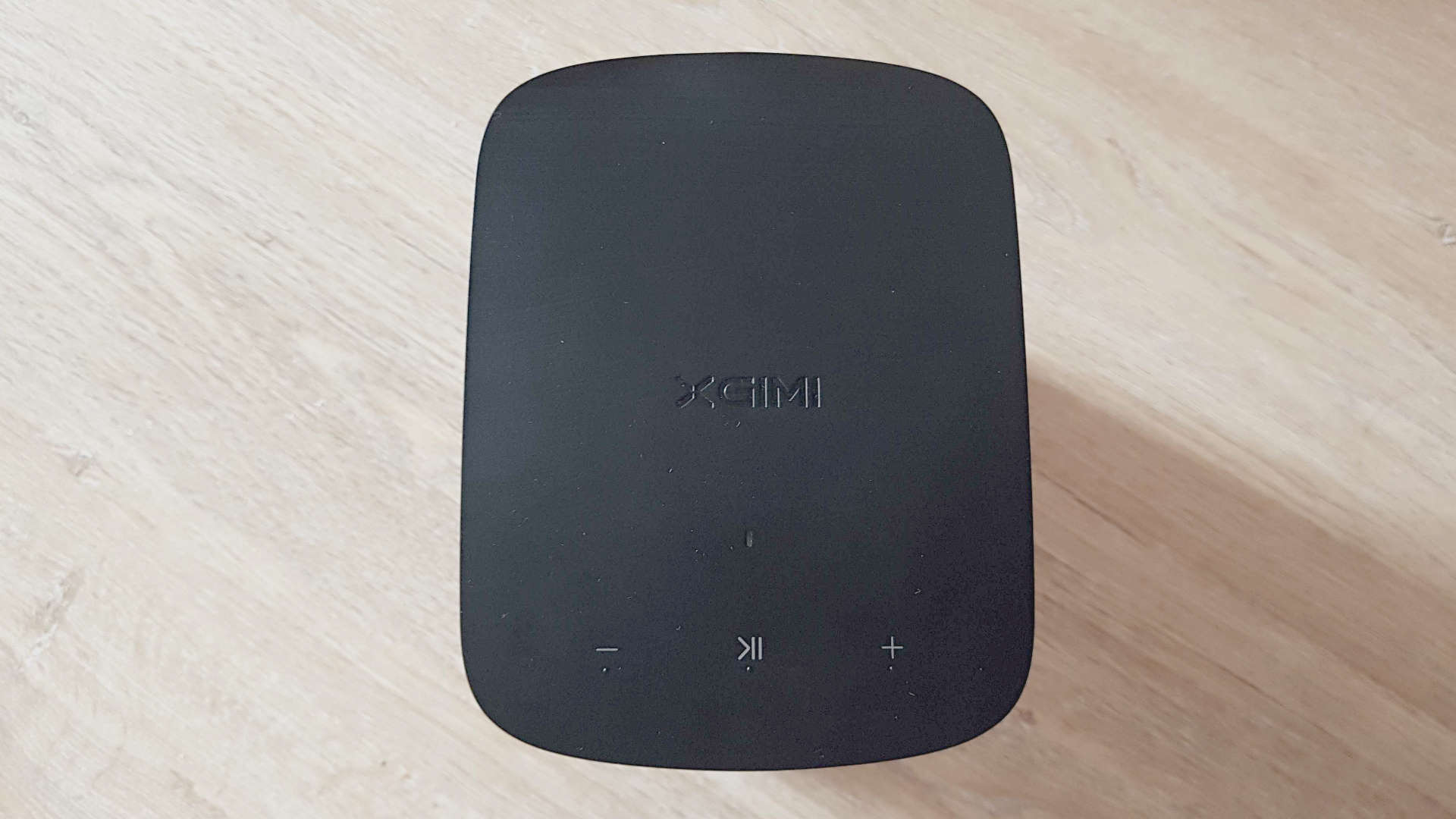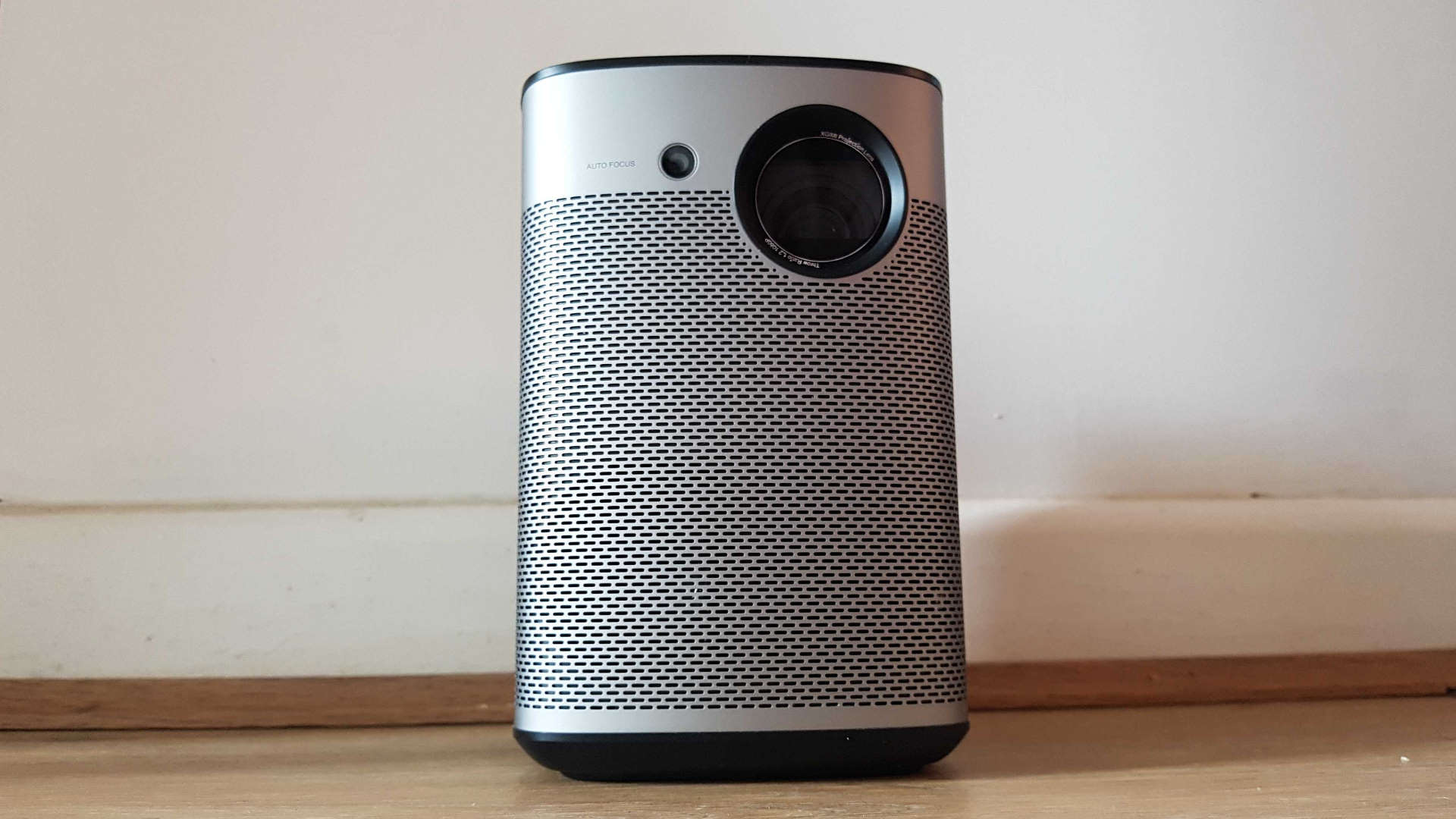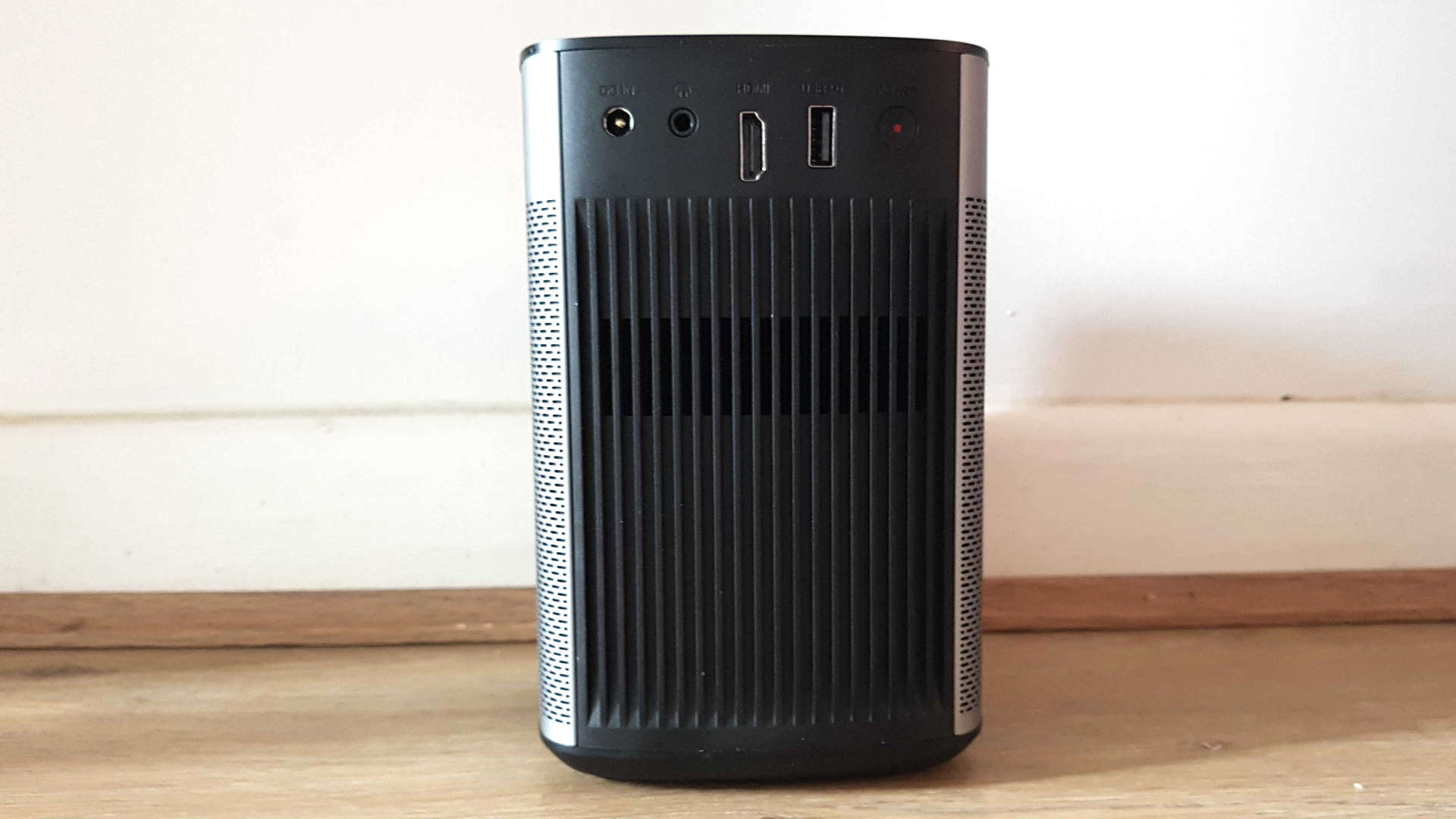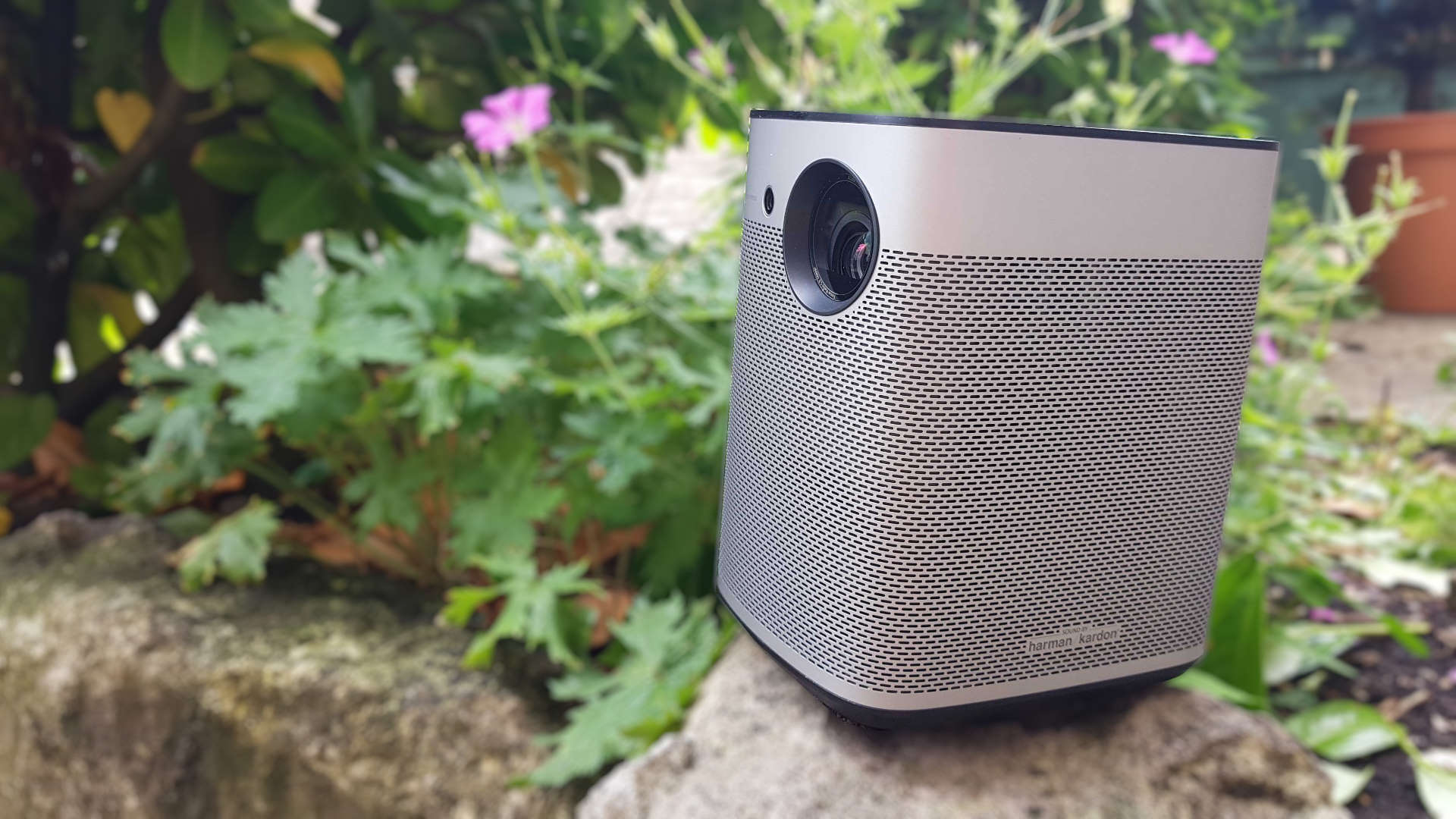Our Verdict
A bright, adaptable, dependable portable FHD projector that should survive a decade of non-competitive gaming or media consumption on the go.
For
- Portable with good battery life
- Android software is great
- Solid keystone correction
- Incredible 30,000 hour lamp life
Against
- Keystone correction doesn't work in gaming mode
- Autofocus gets a bit overexcited
- 60Hz FR and 40ms latency not for competitive gaming
PC Gamer's got your back
The Xgimi Halo portable projector has me wanting to watch movies in the park, or get my game on at the end of the garden during a barbecue, because I'm totally antisocial. But you're probably wondering who the heck Xgimi is in the first place. No, it's not Klingon slur—this is a company that's been making projectors since 2013, with a broad range already under its belt.
The Halo portable projector comes in as a median across the Xgimi range, as well as relative to what the market has to offer. It may not match the connectivity, resolution or refresh rates a high-end, non-portable projector might have, but it's a worthy contender when it comes to 1080p projectors of the same price.
First off, the design is adorable yet sleek. It's easy to hold in one hand, and it uses high-quality materials. The perforated aluminium shell gives it a portable speaker look, and as a Bluetooth speaker alone it performs outstandingly. But the sound produced by the two gorgeous 5W Harman Kardon speakers belies the fact the Halo is so much more than just a portable speaker.
When you want to use the Xgimi Halo to its full potential as a projector, it takes about 40 seconds to boot up and get focussed. That feels like an age when you're aching to play the latest game, but once on it's responsive and utilises the user-friendly Android 9.0 interface.
A niggling flaw is that the autofocus feature, which works through the use of a little camera on the front, does have a habit of seemingly refocusing at random. Thankfully, you can manually set the focus either by navigating the UI, or switching the plus and minus buttons on the remote from volume to focus—there's a toggle on the bottom of the remote for that.
Display Technology: 0.33-inch Digital Light Processing (DLP)
Max Resolution: 1080p HDR
Contrast ratio: 1,000:1
Native Resolution: 1080p HDR
Latency: 40ms
Throw ratio: 1.2:1
Brightness: 600-800 ANSI Lumens
Battery life: 2-3 hrs (standard mode)
Lamp Life: 30,000 hours
Inputs: 1x HDMI 2.0, 1x USB 2.0, 3.5 mm audio jack
Weight: 3.5 lbs (1.6 kg)
Size: 4.4 x 5.7 x 6.7 in (11.2 x 14.5 x 17 cm)
Price: $799 (£729)
If you have the device at an oblique angle from the surface you're projecting onto, you can play around with both vertical and horizontal keystone settings, and it can calibrate itself with commendable accuracy too, which is cool. This feature has its limits though, and doesn't work at all in gaming mode unfortunately; you'll have to find a perfectly parallel spot to project your games from. The ability to attach it to a universal mount helps, though, and it even has a little extendable foot to prop it up on a flat surface, so you can get the angle right.
You can lay the Xgimi Halo on its back and project onto the ceiling if you want, thanks to its obelisk shape (as opposed to the squished look a lot of competitors have gone for). It will rock thanks to its rounded edges if anyone knocks the surface, which can be disconcerting if it's perched on the edge of a table. I wouldn't recommend it for the long term, seeing as the exhaust is on the back.
The exhaust fan runs quietly enough, but it throws out some heat under full load. Once turned off, however, the Halo will continue to cool itself down, which will help prolong the 30,000 hour lamp life rating—call that just under 10 years of use, unless you plan to use it all day, every day. Not bad when you consider others of the same calibre are rated between 4,000 and 20,000 hours.

The Halo's 0.33-inch DLP display shines its red, green and blue LEDs through the fixed lens to exact a 1.2:1 throw ratio. That'll happily achieve an image between 30 and 300 inches (76.2–762 cm) across, though at the larger end of the scale 1080p is going to look pretty pixelated. Still, watching on 100 inches of wallspace means only having to place the Halo around 8.7ft (2.67m) away, so you can get a cinematic experience in a relatively small space.
The projectors colours are vibrant and don't feel washed out, and the Halo allows you to fully adjust the image settings to suit you. There are even some preset image modes to choose from, including a 'gaming' mode that prioritises input latency. You can create custom brightness settings and rename them too, if you're thus inclined. There's even a small novelty in its ability to play media in 3D, with images set side by side, or top and bottom.
It may not be the brightest in the land, maxing out at 800 ANSI Lumens, but according to Xgimi its the brightest 1080p portable projector around. Whether that's true or not, it's still plenty bright for outdoor viewing even in the daytime, should the mood take you. With a battery life of almost 3 hours in standard mode (that's the brightest one), it may not give you long enough to watch The Fellowship of the Ring extended version, but that's long enough for at least one standard length movie. It will go into Energy saving mode after a couple of hours though, where the brightness drops significantly and colours turn yellowish.
As a Smart Android device, the Halo can connect and stream over Wi-Fi from all sorts of services. That means you can pick up where you left off anywhere, as long as you can nab an internet connection. Sadly, the Netflix app isn't compatible yet, but thanks to the Halo's Chromecast ability, and Kodi compatibility, the issue can be circumvented. These may not be the most practical workarounds, but until Xgimi manages to procure licensing, Netflix will be off the table natively.
You can plug in USB devices as well, meaning an Amazon Fire Stick will also work fine. And there are a host of media players available on the android store, so you can watch anything you already have downloaded. You could even store some movies on there, as the Halo has 16GB of storage space in its little aluminium frame.


Now for the most important bit, as I assume you'd be looking to do a spot of gaming with the Halo, I went through and tested it to see whether input lag was going to be an issue. With gaming mode switched on, you get around 40 milliseconds of lag, which is better than its little sister, the MoGo Pro, but still not the greatest for online multiplayer battles, where every millisecond counts.
That verdict's underlined by the Halo's baseline 60Hz refresh—you're not going to get the most out of higher-end hardware as you'll be locked in at these speeds regardless of your fps. Against the Optoma GT1080HDR's 120Hz for the same price, it looks pretty meagre. But that's not to say you can't have a stellar gaming experience with the Xgimi Halo; it's fine for most single player stuff, just don't expect to be doing any intense competitive gaming.
If image fidelity is your main concern, however, the Halo sports a 1080p resolution. And although it does support 4K input, the output is still restricted to FHD. So, no matter how far away you place the projector, you won't get the same level of detail as you would with a true 4K projector. 1080p is still a good resolution for a portable beamer of this class, though—many don't even reach that scale.
When you compare the Halo to other portable 1080p projectors, such as the Epson Home Cinema—which comes in at the same price point of around $800—it becomes evident where Xgimi has focussed its design efforts: Adaptability, portability, brightness, and durability.
Against the higher-end Optoma UHD38's 4.2ms latency, 240Hz, and 4K resolution, you can see what another couple of hundred dollars will get you. But in spending your cash on a higher spec projector, you'd be sacrificing the practical portability something like the Halo can bring to the table.
The Xgimi Halo is a great projector for those who want to do a bit of light gaming in all sorts of spaces, watch movies from weird angles, or just listen to music on a banging portable sound system. It's a bright and dependable little machine that can adapt as needed and won't go kaput after a year or two. Sure, you may not get the speediest gaming experience, but as long as you're not looking to game competitively it's certainly worth the $800 price tag.
A bright, adaptable, dependable portable FHD projector that should survive a decade of non-competitive gaming or media consumption on the go.

Screw sports, Katie would rather watch Intel, AMD and Nvidia go at it. Having been obsessed with computers and graphics for three long decades, she took Game Art and Design up to Masters level at uni, and has been rambling about games, tech and science—rather sarcastically—for four years since. She can be found admiring technological advancements, scrambling for scintillating Raspberry Pi projects, preaching cybersecurity awareness, sighing over semiconductors, and gawping at the latest GPU upgrades. Right now she's waiting patiently for her chance to upload her consciousness into the cloud.


